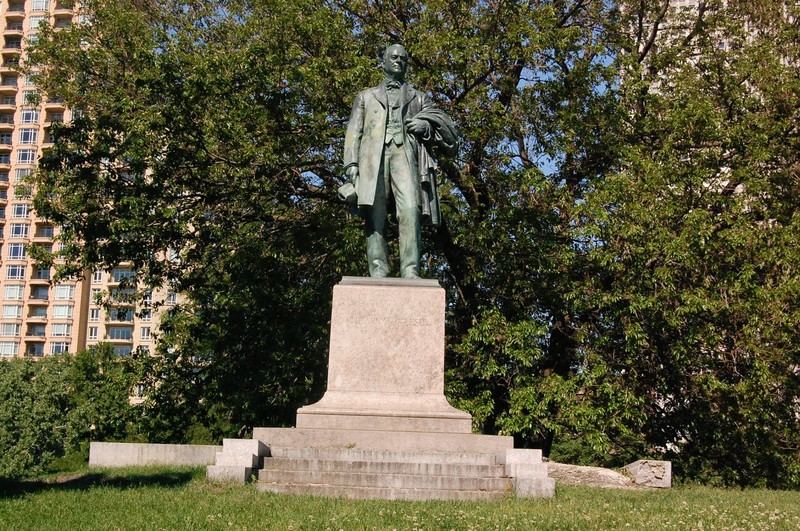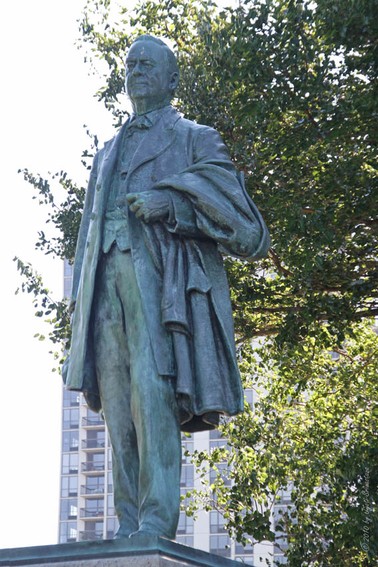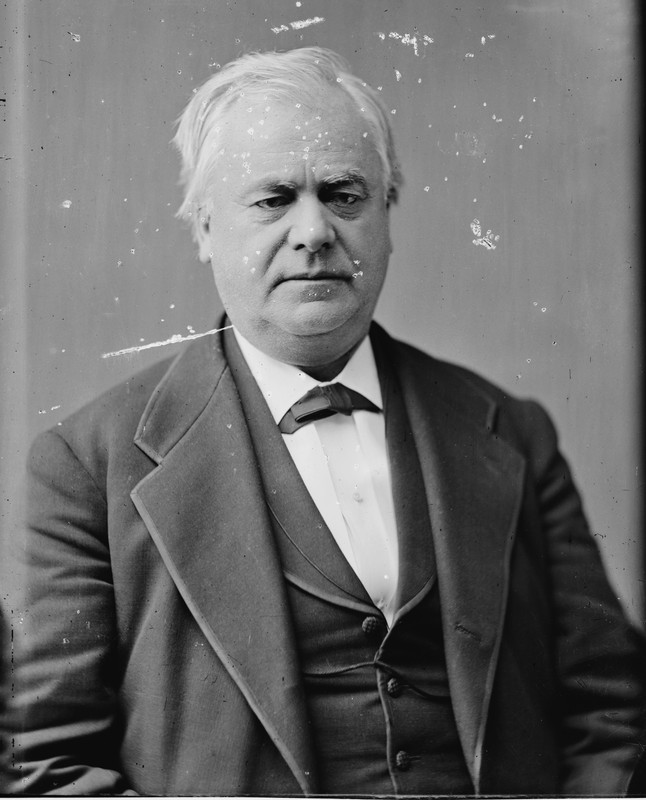Richard Oglesby Monument
Introduction
Text-to-speech Audio
Images
Richard Oglesby Monument in Lincoln Park

A closer look at the bronze statue

A photograph of Oglesby in military uniform during the Civil War
.jpg)
A photograph of Oglesby in his later years (c. 1875)

Backstory and Context
Text-to-speech Audio
Richard James Oglesby was born on July 25, 1824 in Oldham County, Kentucky. While still a young boy, both of his parents died of cholera. Orphaned, Oglesby moved to Decatur, Illinois to live with his uncle. As a young adult, he made the acquaintance of lawyer and state assemblyman Abraham Lincoln. The two Kentucky natives quickly became close friends. After working a series of odd jobs, Oglesby read law and passed the bar in 1845. Not long after establishing a practice in Sullivan, Illinois, he volunteered to fight in the Mexican War. While serving as a first lieutenant in the Fourth Illinois Regiment, Oglesby saw combat at the Battles of Cerro Gordo and Vera Cruz. After serving in the Mexican War, he went to California, where in two years he mined a small fortune in gold. Endowed with newfound wealth, Oglesby returned to Illinois and resumed his legal practice.
Several years later, in the late 1850s, Oglesby launched his political career. A Republican, he ran unsuccessfully for Congress in 1858, but won a seat in the Illinois senate two years later. In the presidential election of 1860, Oglesby supported Lincoln and famously labeled his longtime friend the “rail-splitter” candidate, or the candidate of the common man. When the Civil War broke out in the spring of 1861, he resigned his seat in the Illinois senate and secured a commission as a colonel in command of the Eighth Illinois Regiment. In February 1862, Oglesby participated in the successful Union assaults on Forts Henry and Donelson in Tennessee. Soon after, he was promoted to the rank of brigadier general. In October of that same year, Oglesby suffered a severe wound at the Battle of Corinth in Mississippi. For his heroics and sacrifice on the battlefield, he received a promotion to the rank of major general. After months of recovery, Oglesby returned to active duty in the spring of 1863. The following year, at the urging of President Lincoln, he resigned his commission to run for governor of Illinois. In the gubernatorial election, Oglesby easily defeated Democrat Congressman James Carroll Robinson. On April 14, 1865, the new governor of Illinois spent the afternoon with Lincoln in Washington, D.C. He declined an invitation from the president to accompany him to Ford’s Theater that evening. When Oglesby received word that his close friend had been shot by an assassin, he rushed to the Peterson House where the president had been taken. Early the next morning, Oglesby witnessed Lincoln take his final breath.
Oglesby declined to run for reelection in 1868, but ran successfully for another term as governor of Illinois in 1872. His second term, however, officially lasted less than two weeks. In late January 1873, Oglesby resigned to take his seat in the U.S. Senate. He declined to run for reelection in 1878, but six years later won a third term as governor of Illinois in 1884. When his term came to an end in 1889, Oglesby retired to his farm in Elkhart, Illinois. There, he died roughly ten years later on April 24, 1899.
Some years after Oglesby’s death, five distinguished Chicago residents—Martin B. Bailey, John W. Bunn, L.C. LaForce, John Barton Payne, and J.S. Runnels—pulled their resources to erect a monument in honor of the late Illinois governor. The group hired French-born sculptor Leonard Crunelle to design it. Dedicated in Lincoln Park on November 21, 1919, the monument consists of a ten-foot-tall bronze statue of Oglesby on a granite pedestal. The sculpture depicts Oglesby standing upright, his left leg slightly ahead of his right. He holds his hat in his right hand while his coat is draped over his left arm.
Sources
"Oglesby, Richard James." Biographical Directory of the United States Congress, 1774-Present. United States Congress. Web. 19 February 2021 <https://bioguideretro.congress.gov/Home/MemberDetails?memIndex=O000048>.
"Richard James Oglesby." American Battlefield Trust. Web. 19 February 2021 <https://www.battlefields.org/learn/biographies/richard-james-oglesby>.
"Richard Oglesby Monument." Chicago Park District. Web. 19 February 2021 <https://www.chicagoparkdistrict.com/parks-facilities/richard-oglesby-monument>.
https://giantsinthepark.blogspot.com/2017/01/EmancipatnProclamatn.html
http://chicago-outdoor-sculptures.blogspot.com/2013/02/figural-sculptures-of-lincoln-park.html
https://www.wbez.org/stories/the-oglesby-statue/f5201bee-7324-47de-bb9c-eddd307182f8
https://en.wikipedia.org/wiki/Richard_J._Oglesby
